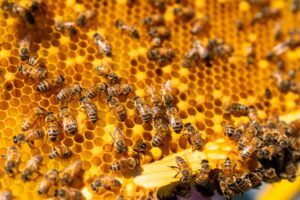Last year, a study reported that humans can actually taste carbohydrates. The new taste, considered our ‘seventh taste’ was described by some people as starchy, rice-like or bread-like.
Now, a new study shows that the ability to detect this new taste has important health implications. For example, it may explain why some of us enjoy bingeing on foods like rice, bread or pasta. Most importantly, this study shows how carb cravings could impact our health.
A starchy tooth?
In this new study, Professor Russell Keast and his team at Deakin University focused on maltodextrin and oligofructose. These two carbohydrates are commonly found in staple foods like bread, pasta and rice.
Previous research by Dr Julia Low, who is part of Russell’s team, found that people were able to sense these two carbohydrates. They also found that some people were more sensitive than others in detecting them.
With this in mind, Russell wanted to find out if people’s sensitivity to carbohydrates was associated with their consumption of starchy foods.

After looking at the carbohydrate sensitivities, eating habits and health measurements of 34 individuals, Russell found a clue. “Those who were most sensitive to the carbohydrate taste ate more of these foods and had a larger waist,” Julia says.
Looking at participants’ waist measurements was even more revealing! “We specifically looked at waist measurements as they are a good measure of the risk of dietary-related diseases,” Russell adds.
The team found a difference of more than 10cm in waist circumference between people with high versus low carbs sensitivity.
So what does this mean? Well, the findings show that people’s poor eating habits may be more complicated than previously thought.
Helping with a global problem
All around the world, dietary-related conditions like obesity or cardiovascular diseases are affecting millions of people. “Greater intake of energy-dense foods is thought to be one of the major contributors to the global rise of overweight and obesity,” Russell says.
And guess what is a major source of these energy-packed foods. Yes, carbohydrates.
But why is it that some people more than others crave certain food types like carbohydrates or fats? We don’t really know for sure, but the findings of this new study show that it is not just about people making bad decisions.
“Individuals who are more sensitive to the taste of carbohydrates also have some form of subconscious accelerator that increases carbohydrate or starchy food consumption,” Russell says.
More research is needed to figure out how carbohydrate sensitivity influences food consumption, but at least now you are a bit wiser.
So next time you feel like nibbling an extra bite of that tasty bread, remember that is just your tongue doing the talking!









